.
Last month, I discussed the overlap between epic and heroic fantasy, along with the parts played by heroes, anti-heroes, and occasionally outright villains, and posed the question, What Makes A Hero? In addressing it, I indicated my intention to begin by examining "three criteria—three
C’s in fact—over the next few months."
_poster.jpg) |
| What makes a hero? |
The first of these was “the call”, which I delved into last month. Today (as the title hints ;-) ) I'm taking a closer look at circumstance and how events shape the protagonist.
You notice I said "protagonist" here, not "hero", because one of the elements discussed last month was how the person that ends up being key to the book's events and saving the day isn't always a "hero" from the outset.
 |
This is particularly the case where the protagonists are anti-heroes, and examples I cited included Yarvi in Joe Abercrombie’s Half A King and Half A War; Waylander the Slayer, in David Gemmell’s Drenai novels, and Michael Moorcock’s Elric of Melnibone (the Elric series); along with Nahri in SA Chakraborty’s City of Brass and Venli in Brandon Sanderson's Stormlight Archive series. Not to mention a raft of characters in George RR Martin's A Song of Ice and Fire series (filmed as Game of Thrones) -- to name only a very few leading anti-heroes across the Fantasy genre.
By definition, an anti-hero is patchy in character and potentially morally reprehensible, so more likely to resist the call than a paladin, or heroes like Aragorn in The Lord of the Rings who have been raised to honor, duty, and to answer the call of destiny. Mat Cauthon in Robert Jordan's Wheel of Time series is another example of a "patchy" character whose eventual heroic actions are far more a result of circumstance than personal inclination.
 |
In NK Jemisin's Inheritance trilogy, the three main god protagonists, Nahadoth, Itempas, and Sieh (who is an outright trickster character) are more often cruel than benevolent and only act as heroes in the context of circumstance. Yeine Darr, the chief female protagonist in The Hundred Thousand Kingdoms (Inheritance #1) is morally complex at best, although well-intentioned at the outset, while Oree Shoth in The Broken Kingdoms (Inheritance #2) is cast in a more straightforward heroic mold.
 |
Another protagonist with anti-hero tendencies who is transformed by circumstances into a hero, is Barbara Hambly's mercenary, Sun Wolf, in The Ladies of Mandrigyn. Admittedly, although a mercenary he's not venal as such. John Adversane, of Hambly's Dragonsbane, is far more a paladin by personality and duty, but his heroic choices are still driven by circumstances that have made him the sole military defender of his community.
While circumstance is usually vital in order for an anti-hero to answer the call, it also plays an important part in the stories of John Adversane, Oree Shoth, and similar protagonists. For example, it's questionable whether the panzer-bjorn, Iorek Byrnison, in Philip Pullman's The Golden Compass is an actual anti-hero, or simply a hero that's fallen upon hard times. (I do believe the two constitute different types of "hero" in character terms.)
 |
Circumstance is also an important factor when everyday, run-of-the-mill individuals are called upon to step up and undertake heroic tasks and/or quests. Frodo carrying the one ring to Mordor is possibly the most well-known example, but it's a concept that lies at the heart of every tale of a farmboy/farmgal who goes on a journey and ends saving the realm, if not the world.
I know, I know: Luke Skywalker and Mulan; Patricia McKillip's Morgon of Hed, TL Huchu's Rupa, and Kristin Cashore’s Ad(venture) Fox -- their numbers are legion.
 |
| Ad(venture) Fox -- a hero by circumstance |
In my own The Wall of Night series, the two main protagonists, Malian and Kalan, are both heroes that heed the call from duty and inclination, while also being driven by circumstances that comprise implacable enemies and a Ragnarok-style end-of-times. They also have superpowers, whereas Myr, the Daughter of Blood for whom the third book is named, is very much the "ordinary individual" who must rise to the occasion amid adverse circumstances.
 |
Similarly, Amanda Arista's Merci Lanard, in the series of the same name, is driven to pursue the truth and unmask the dark underbelly of her community, no matter how high the stakes or great the danger.
 |
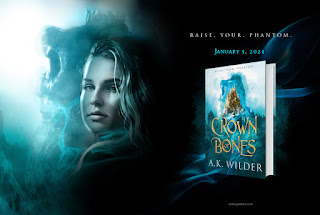 |
In short, whether paladin or antihero, a regular guy/gal or near-outright villain (Yarvi, I'm looking at you), and whether the protagonist answers the call willingly or resists, circumstance plays a vital part in making heroes.
© Helen Lowe
~*~
Previous Posts:
January: Looking Forward To An Heroic 2022
March: What Makes A Hero -- and The Call
~*~

About The Author:

Helen Lowe is an award-winning novelist, poet, and lover of story. With four books published to date, she is currently completing the final instalment in The Wall Of Night series.
Helen posts regularly on her “…on Anything, Really” blog, monthly on the Supernatural Underground, and tweets @helenl0we.

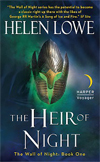
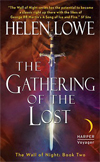
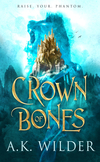
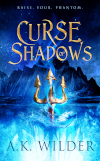
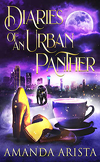
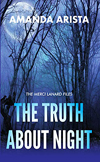

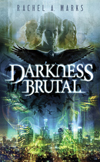
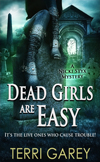
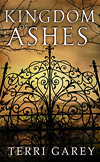
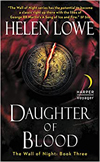
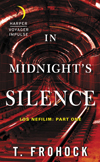

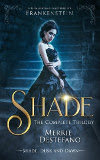

No comments:
Post a Comment